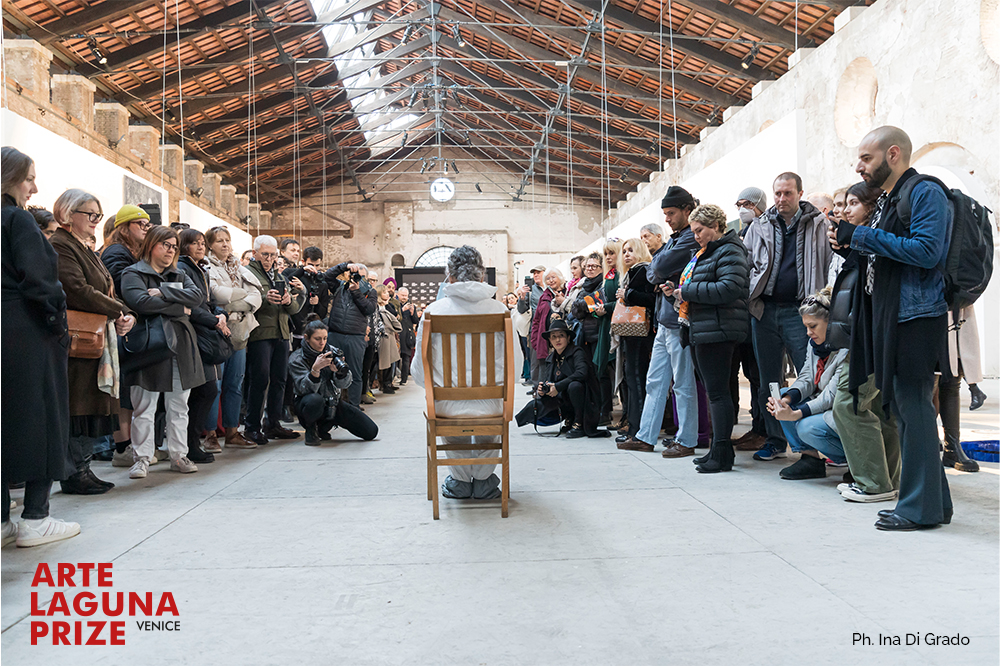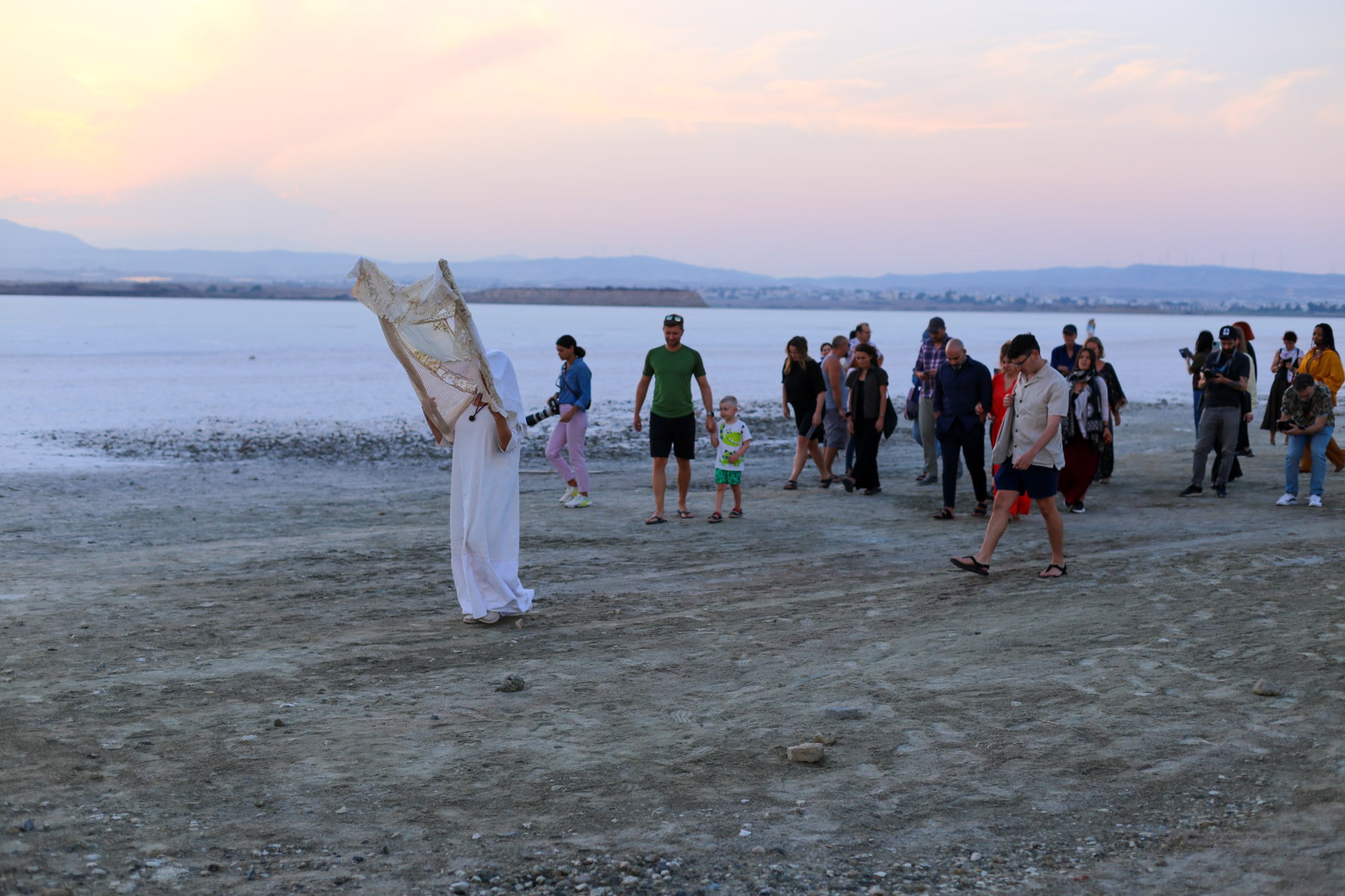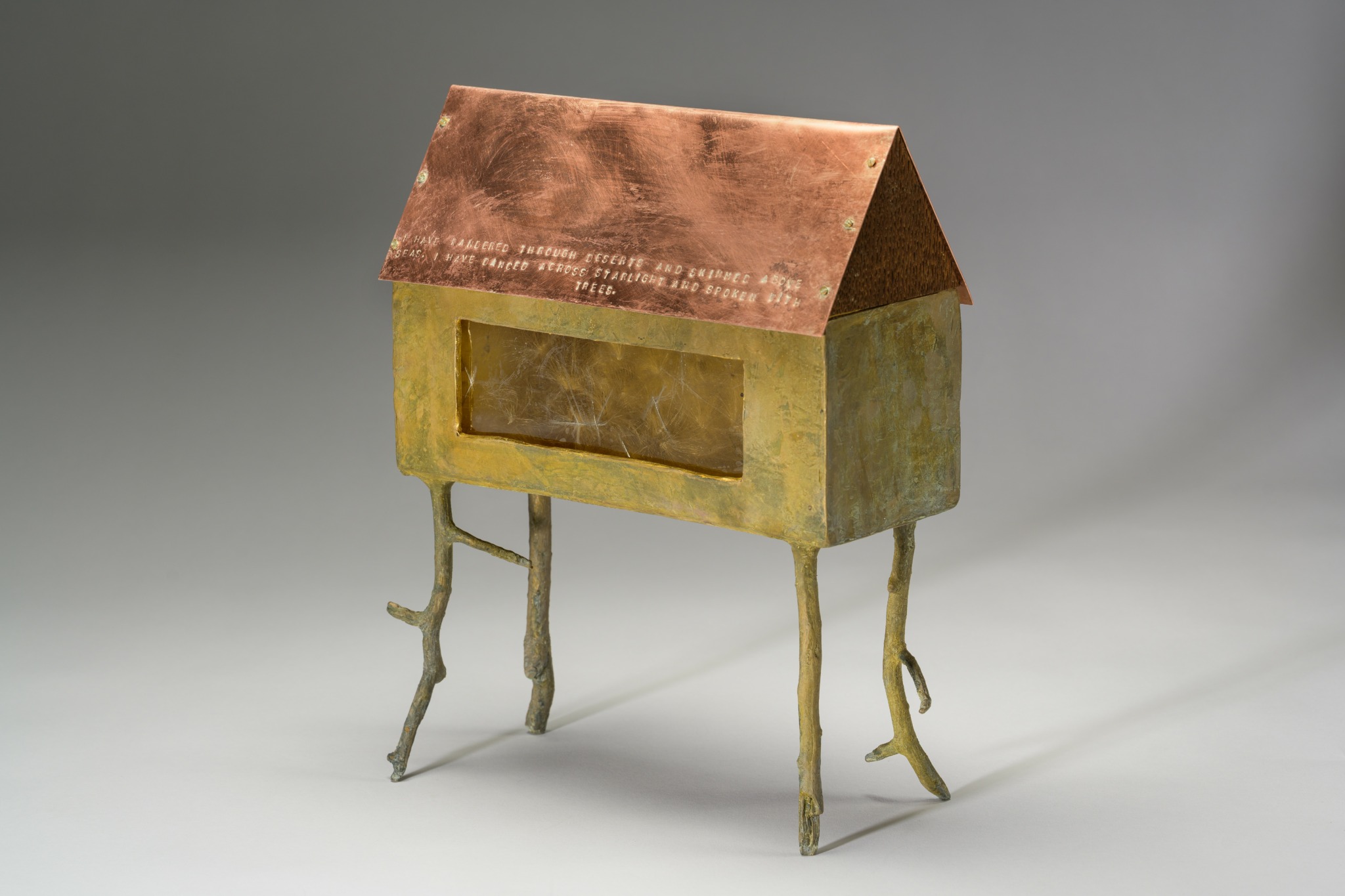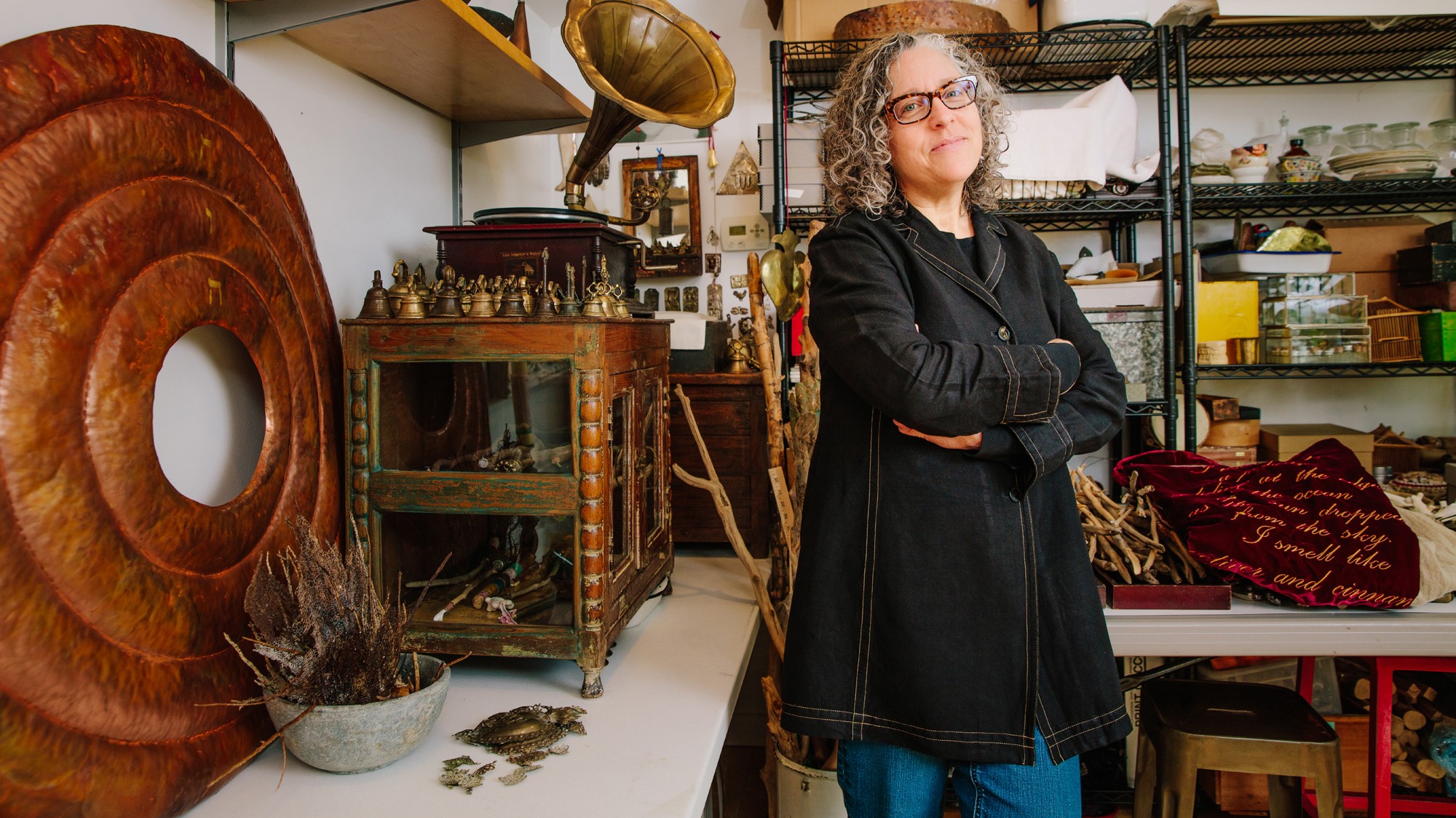We recently connected with Beth Krensky and have shared our conversation below.
Beth, thanks for joining us, excited to have you contributing your stories and insights. What’s been the most meaningful project you’ve worked on?
In 2022, Yale University’s Institute of Sacred Music exhibited a 20-year retrospective of my work. The retrospective exhibition, Between Spirit and Matter, explored the liminal spaces between spiritual and physical realms. The exhibition contained 47 works, including: sculptural objects, videos and photographs of performance art pieces, and installations meant for serendipitous interaction. I thoroughly enjoyed working closely with the curator, Maddie Blonquist Shrum, who is now the Curator of Religious Art at the BYU Museum of Art. I think it was such a meaningful project because it gave me the opportunity to reflect on the conceptual underpinnings that connected my performance pieces and objects over the past two decades. I also was intrigued by the unique approach to the exhibition. The work was placed throughout the entire Institute of Sacred Music and was intentionally places to promote interaction and dialogue with faculty, students and members of the Yale community and public.


Beth, love having you share your insights with us. Before we ask you more questions, maybe you can take a moment to introduce yourself to our readers who might have missed our earlier conversations?
For as far back as I can remember, I have built and drawn my understanding of myself and the world. As a child, I would gather small objects from the streets and gutters of New York City, put them in my pockets, and build tiny sculptures. I still collect forgotten objects and make art from them. It is this foundation of being an artist that shapes how I approach everything, including being an educator and scholar.
As an art student in my early 20s at the School of the Museum of Fine Arts, I remember asking my professors why they were artists. At the time, I was searching for an answer to a dilemma that plagued me —How can someone be an artist and be involved in making change happen? This question remained unanswered for many years until I figured out how to combine being an artist, activist and educator. I am a Distinguished Professor of Art Teaching at the University of Utah. I consider my art practice as broad, which encompasses teaching and collaborating with university students and community members.
I am a gatherer of things—objects, words, spirit—and a connector of fragments, to make us whole and to help us heal.
My artistic practice traverses the borderlands between spirit and matter and I create objects and performative gestures as a contemplative act. Much of my work, which is cobbled together from the detritus of life, is intended to be portable and able to metaphorically cross layers of shared and contested existence.
I attempt to address pressing issues while providing a refuge, or a free space, that allows participants to name themselves, envision a different reality, and engage in the re-making of their world.


We often hear about learning lessons – but just as important is unlearning lessons. Have you ever had to unlearn a lesson?
I attended art school in the mid-1980s where it was drilled into us that two things were most important–we should go to Yale for our MFAs and we should get our work into the Whitney Biennial. Aside from my decision to attend Harvard for graduate studies in education—instead of Yale for visual arts—I believed fully in the Whitney Biennial dream. I actually think it was the birth of my son that allowed me to realign my priorities. I had to ask myself what in my life was worth time away from my child. The Whitney Biennial had lost all of its power and allure. I wanted to make art that did something—for me, for mothers, for children, for the planet. It was at this point that I decided to side-step the art world.
The artist Louise Bourgeois was an important role model for me. She spoke openly about how motherhood and gender marginalized her, but also provided much freedom. She was largely ignored by the art establishment for decades which afforded her the opportunity to experiment and find her unique vision. I had the great honor of studying with the social psychologist Carol Gilligan who also talked about the gift of existing on the margins. Much of my work is conceptually rooted in social practice. This has helped me understand that “interaction” is a legitimate medium and that one’s artistic practice can be broadly defined. It is quite interesting that once I decided that I did not care about the art world establishment and just focused on making deeply meaningful work, the art world came knocking.


What can society do to ensure an environment that’s helpful to artists and creatives?
I think the arts are essential to an open society. The arts have the ability to create a free space where one can envision something outside the realm of what already exists for oneself, one’s community, or the world. Within this so-called free space, people can imagine a different reality for themselves and their communities. It is no accident that artists are some of the first people to be attacked when oppressive regimes come to power. Censuring art, limiting funding and other forms of support for artists are just some of the ways governments attempt to silence the essential voices and visions of artists.
I wrote a book with Seana Lowe Steffen about the power of the arts to connect us with one another. “Engaging Classrooms and Communities through Art” provides the theoretical justifications for and practical applications of using art to engage with and help transform communities. I think it is essential that the arts are funded in public schools. They authentically help us develop empathy, something that is sorely missing in our schools and country.
Contact Info:
- Website: https://bethkrensky.com/
- Instagram: #bethkrensky
- Facebook: #bethkrensky


Image Credits
Head shot: Simon Blundell
Arte Laguna: Arte Laguna Prize
Dispatch from Solitude #3: Matte Hanna
Keys to Open the Beginning Before the End: Amelia Walchli
Larnaca Biennale: Larnaca Biennale
Pocket Reliquaries: Stuart Ruckman
Reliquary for a Dream: Stuart Ruckman
Wish: Stuart Ruckman
Float Away: Josh Blumental


